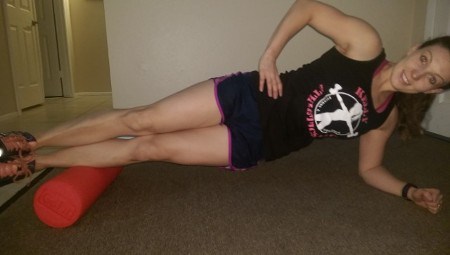How to Choose a Personal Trainer
Special points of interest: Accreditations First impressions Results-oriented Realistic goals Setting the bar
1. Before you jump the gun, find out if your Personal Trainer is certified through a top accredited program (such as NASM, ACE, or NCSA). Most certifications only require passing an exam, which means almost anybody could take the test. You want to make sure it was a challenging & reputable program that ensures the trainer is well trained and knowledgeable in fitness for a variety of clients. Also make sure he/she is AED/CPR or First Aid certified and has obtained a legal business license. If they don’t take their business seriously, you shouldn’t take them seriously either.
2. Does your trainer LOVE his/her job and seem passionate about it? This one is a no-brainer. First impressions are truly invaluable when meeting a Personal Trainer. If your trainer seems pressed for time, has little to say or looks uninterested in conversation – you probably should turn the other direction.
3. What results did past clients have? Ask if your trainer can share testimonials or can get you in touch with another client for a second opinion. If your trainer has not helped other people achieve a new level of fitness, don’t expect miracles to happen when it’s your turn. However, if he/ she is a new trainer, just make sure you are treated with respect and he/ she demonstrates a genuine interest in reaching your goals. If your trainer is arrogant or makes you feel inferior during the initial consultation, which is not a good sign.
4. Are they setting realistic goals with you, or are they making false promises? Typically, one should not plan on losing more than 3 pounds of fat per week. Do not let someone fool you into thinking they can get you down 50 pounds your first month. While nobody wants to be told it will take 6 months to get into shape, being lied to is going to hurt you more. Does your trainer practice what they preach? Ask them how they stay in shape and see what they say. If they give a detailed description of how often they work out and what types of healthy foods they eat, they are probably a good trainer for you.
Many trainers have naturally fit bodies which is why they chose this career path, but sometimes you need to find one that works hard to stay fit so they can understand what you are going through. Volume 1, Issue 6 by Kelly Irish Decisions, Decisions… In conclusion, go with your gut to choose a personal trainer. If a trainer seems honest and genuine with you, and you can trust what they say, you have found a good match. Don’t let a pressure sale or cheap price choose a peronal trainer for you.
Read more: Choose a personal trainer PDF
Contact Me for More Info or if you’re ready to Choose a Personal Trainer:
